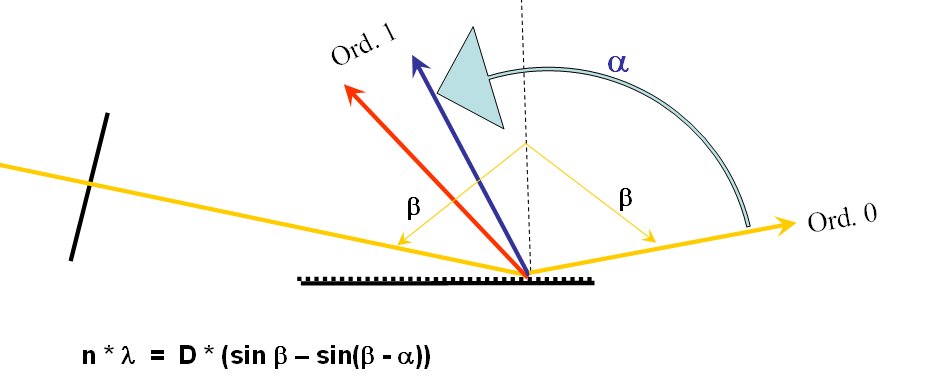
Some Experiments with a BlueRay disk
Joachim Köppen Vienna May 2007
CDROMs and DVDs are fine ... but what shall we be able to do with a BluRay disk, once they become so cheap that we can cut them into pieces?
The tracks lie much closer together: the separation is only 0.32 nm. Because this is shorter than the wavelength of visible light, even blue and violet light, the deflection angles for visible light are larger than 90°. This means that we cannot use such a disk in a spectroscope where the light falls perpendicularly on the disk! We have to use it in glacing orientation, where light falls in nearly parallel to the disk and the observer looks at the output from the other end of the disk:

This also means that we cannot observe any higher order, since the deflection angle would exceed 180°. Nonetheless, one can do a few experiments in first order: I propped up the disk on a table so that the direct sunlight came in almost parallel to the disk, and I held the Webcam vertically down and observed the bright coloured streak across the disk:
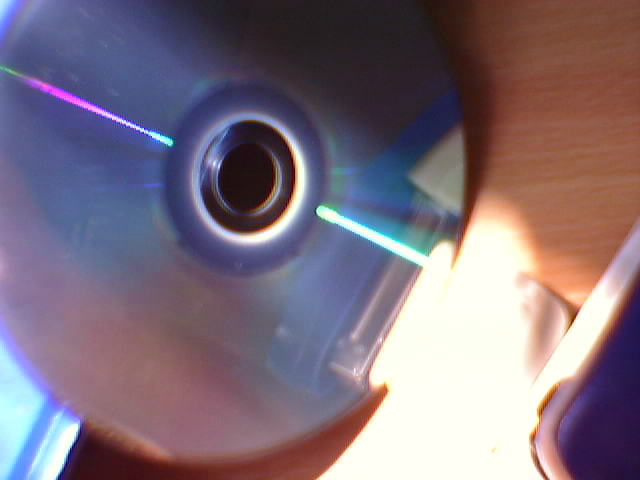
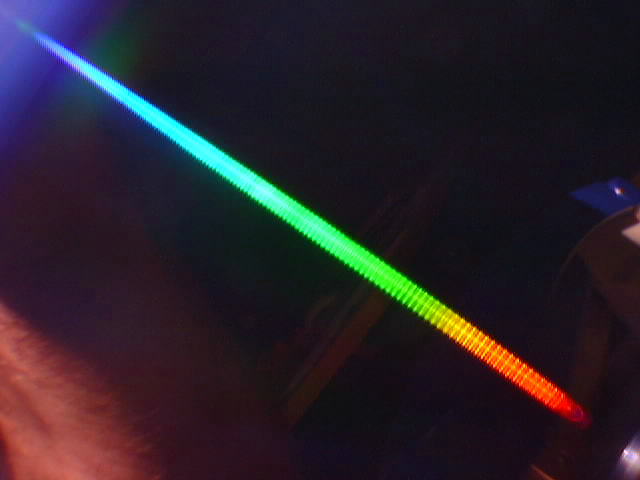
where one could see all the rainbow colours ... However not in a nice smooth band, but with closely spaced dark bands. Evidently these are fringes from the reflections of the light inside the plastic disk. When you hold the camera sufficiently close - just two or three centimetres, so one has to be careful to avoid the camera case to cast a shadow and block the incoming sunlight - you can spread out the coloured streak into a broad band, just as described with the slitless DVD spectra, which made it easier to distinguish some genuine spectral lines among the closely spaced fringes:
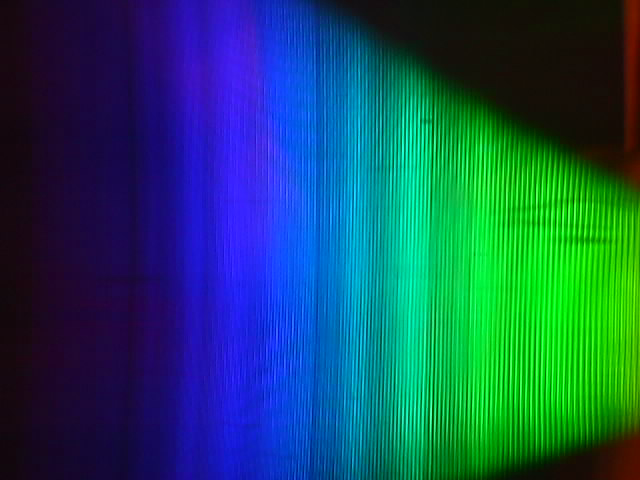
Also, on this image one notes the moiré-pattern from the interference of these fringes with the pixel structure of the webcam's CCD chip.
These fringes are really annoying. I had noticed similar fringes in CDROM when looked at certain angles, but they never are so bothersome. If one wants to see as far as the red part of the spectrum, the disk fringes are very strong, but if one looks from a different angle and is content with the blue-green part, those fringes are less prominent. With quite a bit of experimentation, I finally got a spectrum which is an acceptable compromise, operating the camera in monochrome mode:
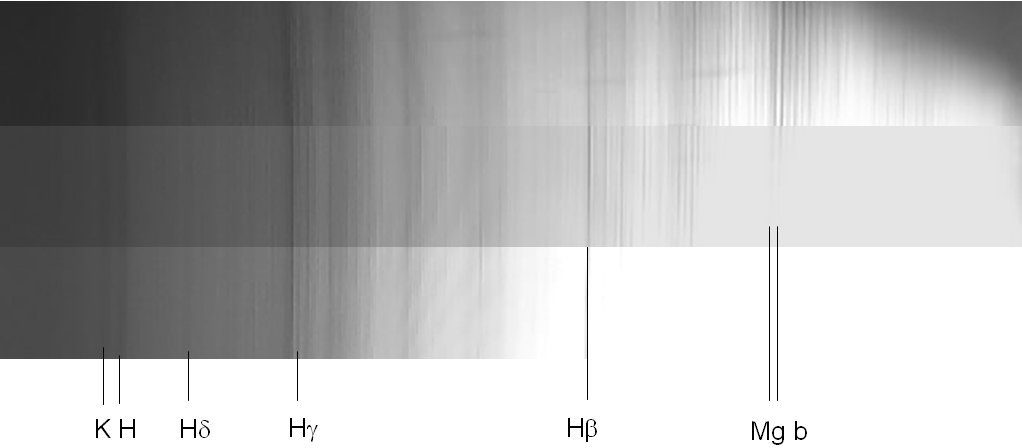
Since the image is not evenly illuminated, I played with the brightness and contrast in three sections to bring out the various features: the ultraviolet Ca H and K lines are there, the lines around Hg and the Mg b lines seem to be resolved!
In summary, one might say that the tracks in the BluRay disks are already too closely spaced to make them useful for spectroscopes ... but when they have become cheaper and fully part of our everyday life, we can experiment with them to find ways for their better use!
Acknowlegment: Hearty thanks go to Franz Kerschbaum who lent me the disk "House of Flying Daggers" and trusted that I would resist the temptation to cut it up and make another spectroscope ...